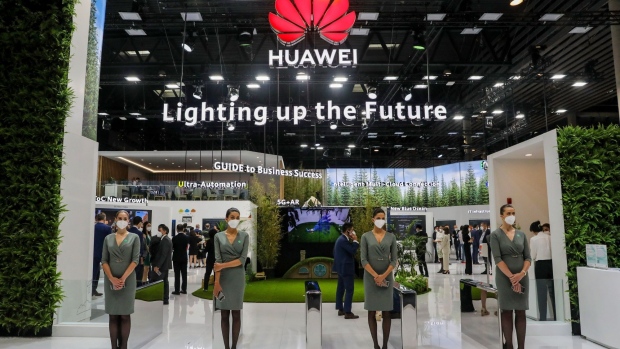Mar 27, 2023
Huawei Touts Progress Replacing Chip Design Software Led by US
, Bloomberg News

(Bloomberg) -- Huawei Technologies Co. has developed software tools capable of designing chips as advanced as 14 nanometers, advancing efforts to help Chinese companies sidestep US sanctions and replace American technology.
The telecom leader’s inhouse teams worked with domestic partners to build tools required for creating chips considered a few generations behind cutting-edge, Rotating Chairman Eric Xu said. It plans to verify the products — known as electronic design automation or EDA software — this year, Xu added.
Huawei is among a coterie of Chinese hardware technology providers working furiously to replace sanctioned US components and software from AI chips to EDA tools — an arena dominated by American firms Cadence Design Systems Inc. and Synopsys Inc. Chinese chip software developer Empyrean Technology Co. rose as much as 7% in Shanghai on Monday after saying it has built solid commercial ties with major local chip designers and makers.
“We have basically realized the goal of building indigenous tools for designing chips as advanced as 14-nanometer,” Xu said during a company event on Feb. 28, according to a transcript of his speech circulated on social media and confirmed by a Huawei representative. Huawei has built 78 tools over the past three years to replace foreign products, he said.
Chinese President Xi Jinping has frequently highlighted the importance pf building a self-sufficient supply chain, particularly on the semiconductor front, as the US has continued to tighten China’s access to critical foreign technologies.
14nm is about four generations behind the latest commercially available products, but is already the second-best technology in China. Semiconductor Manufacturing International Corp. is capable of making 7nm chips.
Huawei gradually lost access to a large number of chips and the latest semiconductor design tools after the Trump administration blacklisted the company in 2019, citing national security concerns. Those sanctions helped torpedo Huawei’s smartphone business, once the world’s largest.
To build its own chip design tools, Huawei looked to hire scores of seasoned engineers to achieve breakthroughs in core technologies, Bloomberg News reported last year.
While Huawei can buy mature semiconductors from the likes of Qualcomm Inc., it is virtually impossible for the company to place orders with contract chip manufacturers like Taiwan Semiconductor Manufacturing Co. directly.
Existing US regulations ban chipmakers using any US technology to build new semiconductors for Huawei without a license. That means even leading Chinese foundries including SMIC and Hua Hong Semiconductor Ltd. cannot supply Huawei as they still use American production gear.
©2023 Bloomberg L.P.





